|
Highlights of Guilin
April 10, 2000. Our stay in Guilin was very short, less than 24 hours.. The sleepy 1 million
plus picturesque town is situated by the Li River. Its claim to fame is
tourism focused upon the beautiful mountains rising up from the landscape and
the river flowing along side the mountains.
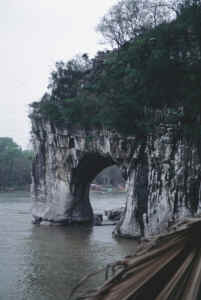
We visited the Reed Flute Cave which reminded us of Carlsbad Cavern. Reeds
used to make musical instruments originally were grown at the entrance to
the caves- thus the name. The big room of stalactites and stalagmites was used
during WWII as a bomb shelter for the town people. The Crystal Palace of the
Dragon King grotto can hold 1000 people comfortably. Our next stop was a
trip through the local university including its thriving art center.
On our own later in the afternoon, we walked along the waterfront and were
repeatedly approached by 'art students' asking if they could practice their
English but ultimately hoping to get us to view and buy their art
works.
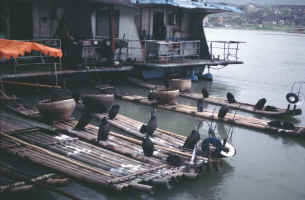
After dinner we took a night tour on one of the local fishing boats for the
purpose of watching the cormorants fish. The birds are hungry but their necks
are tied such that they are unable to swallow fish. So they dive from the
boats catching fish only to have them taken by the fishermen. We finished the
evening walking along an open-air crafts market. Many vendors all wishing
to sell knick knacks to tourists - very capitalist.
Farmers in this area experience more freedom in their income and the
one-child law. At one time all the fields in Guilin were used for growing
rice, now fish is the number one crop. This is because the rivers are so
polluted that fish became very scarce with no way to replenish stock until farmers started
converting rice fields to fisheries.
Highlights of Guangzhou
April 11, 2000. After a delay at the Guilin airport we arrived in Guangzhou around
noon. It was muggy and overcast but we lost no time and drove to the Sun
Yatsen Memorial Hall. Sun Yatsen, known as the first president of the Republic
of China, was born south-west of the city in Cuiheng. Sun headed the
Nationalist Party in Guangzhou and it was here that the fledgling Communist
Party began to take shape.
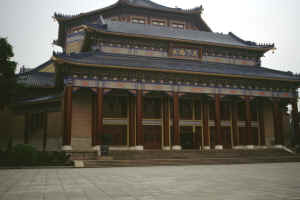 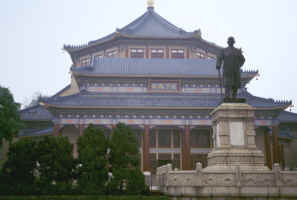
The Hall built with superior
acoustics and clear sight lines (no columns in main space) was designed by a Cornell trained Chinese architect.
The Temple of Six Banyan Trees was our next stop. The octagonal Flower Pagoda
on site was originally built in 1097 and is the tallest in the city (17 stories).
Today it serves as the headquarters for the city Buddhist Association. When we
arrived it was covered in a labyrinth of wooden
scaffolding.
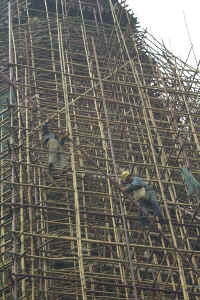 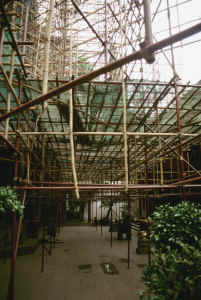
On the grounds of this active site is the Guanyin Temple that houses a
huge golden effigy of Guanyin - the goddess of compassion to whom women burn
incense and pray. It is very obvious that this temple survived the
Cultural Revolution with little damage or looting.
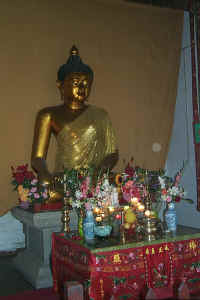 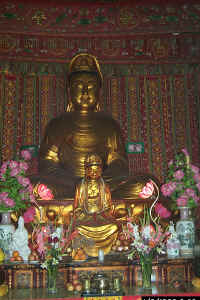
The last formal and chaperoned stop today was the Chen Clan Academy.
This is a family shrine housed in a large compound built between 1890 and 1894.
It was used for celebrating sacrifices and other ceremonial occasions. The three
major halls contain extensive wood carvings and pieces of
furnishings.
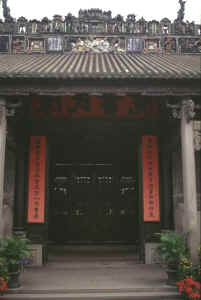 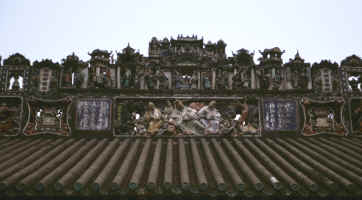
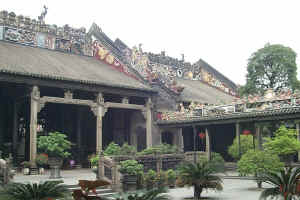 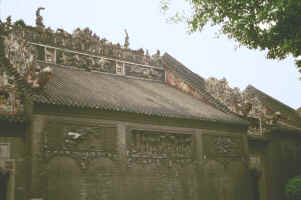
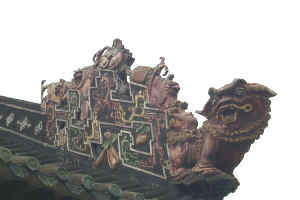
The compound contains nineteen traditional buildings along with numerous
courtyards, stone carvings and sculptures. Ceramic carvings dot the roofs
and eaves and the main doors are elaborately painted with figures.
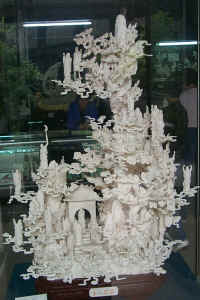
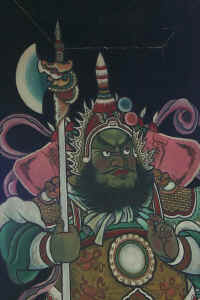 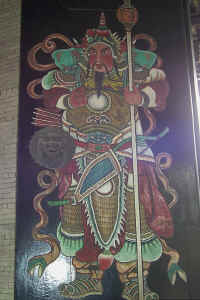
We checked into our hotel, The White Swan, located on Shamian Island. The
island was the British and French concession after defeating the Chinese in the
Opium Wars. The buildings, colonial in design, originally housed trading
offices and residences. During the Cultural Revolution most of the buildings
were turned over to the people for use as offices or apartment blocks that until
recently have not been touched for many years. There are also several churches
remaining on the island and the very British tennis club is still active.
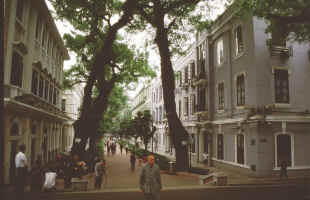 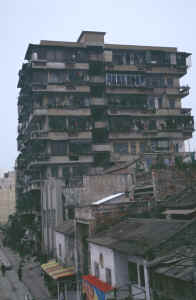
After exploring the island we walked to the mainland and headed for the
nearby Qingping Market. In 1979 the market was opened as a capitalist market -
one of Deng Xiaoping's more radical economic experiments. There is
everything dead or alive to be found - dry and wet markets - eels, fish,
monkeys, dogs, chickens, snakes, etc.
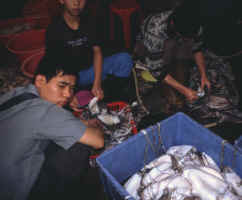 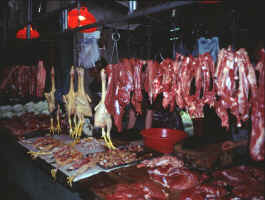
Our last state-sponsored dinner was at the Lakeside restaurant -very close to
the hotel. We could select our live entree on the way in if we preferred
snake, lizard, chicken, pigs, etc.
The White Swan overlooking the Po River has the American consulate attached
to it by annex. For this reason, the hotel is the center of many western
couples finalizing adoption of Chinese girls (boys are not eligible for adoption
unless disabled and unfit for work). Many couples were spending time in
the hotel with their new family additions waiting for the last bureaucratic
paperwork to be completed.
The next day we rode to the water terminal, exchanged all of our RMB (illegal
to remove from mainland China), went through customs, and boarded a hydrofoil
for a 2.5 hour ride to Hong Kong.
|